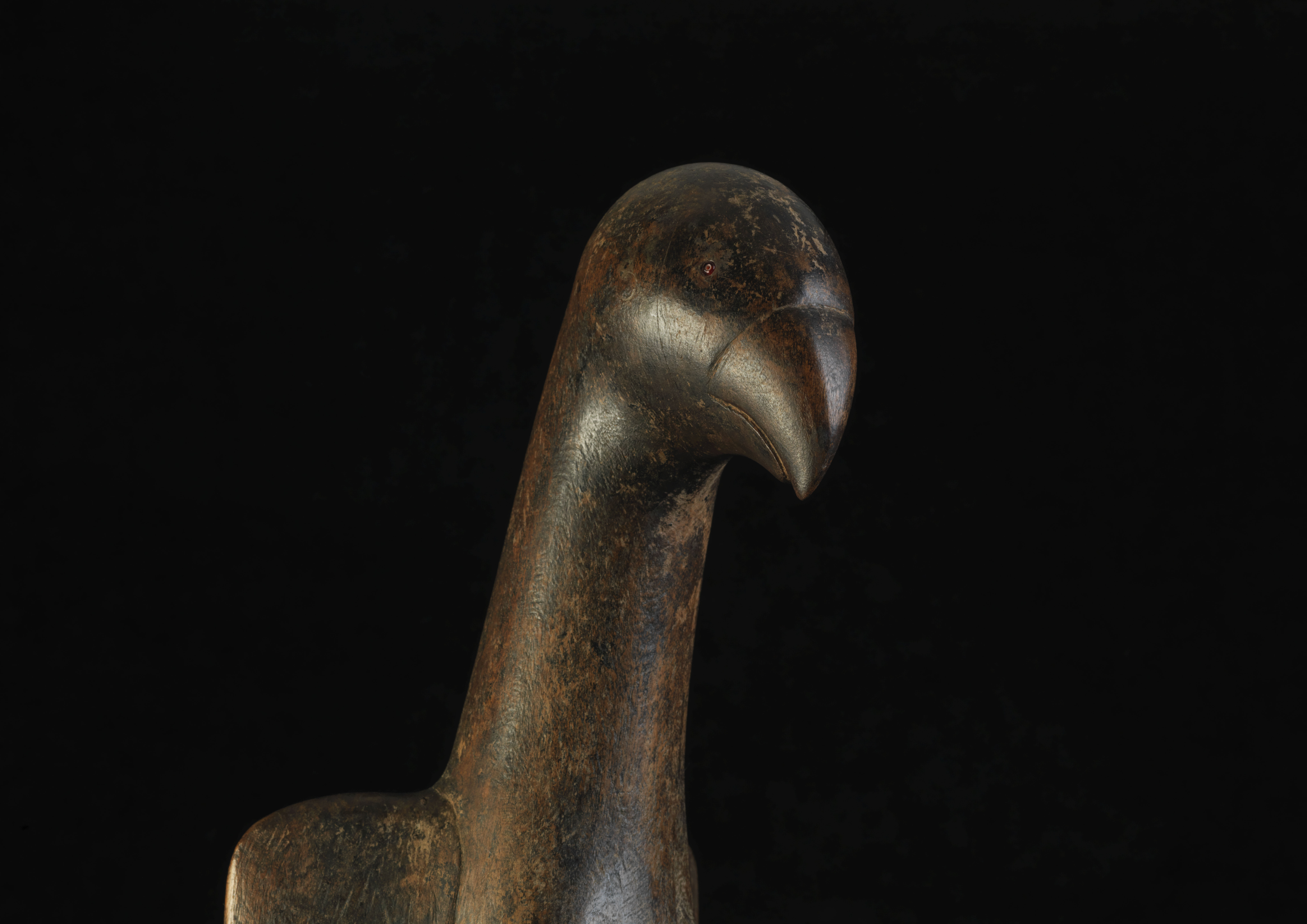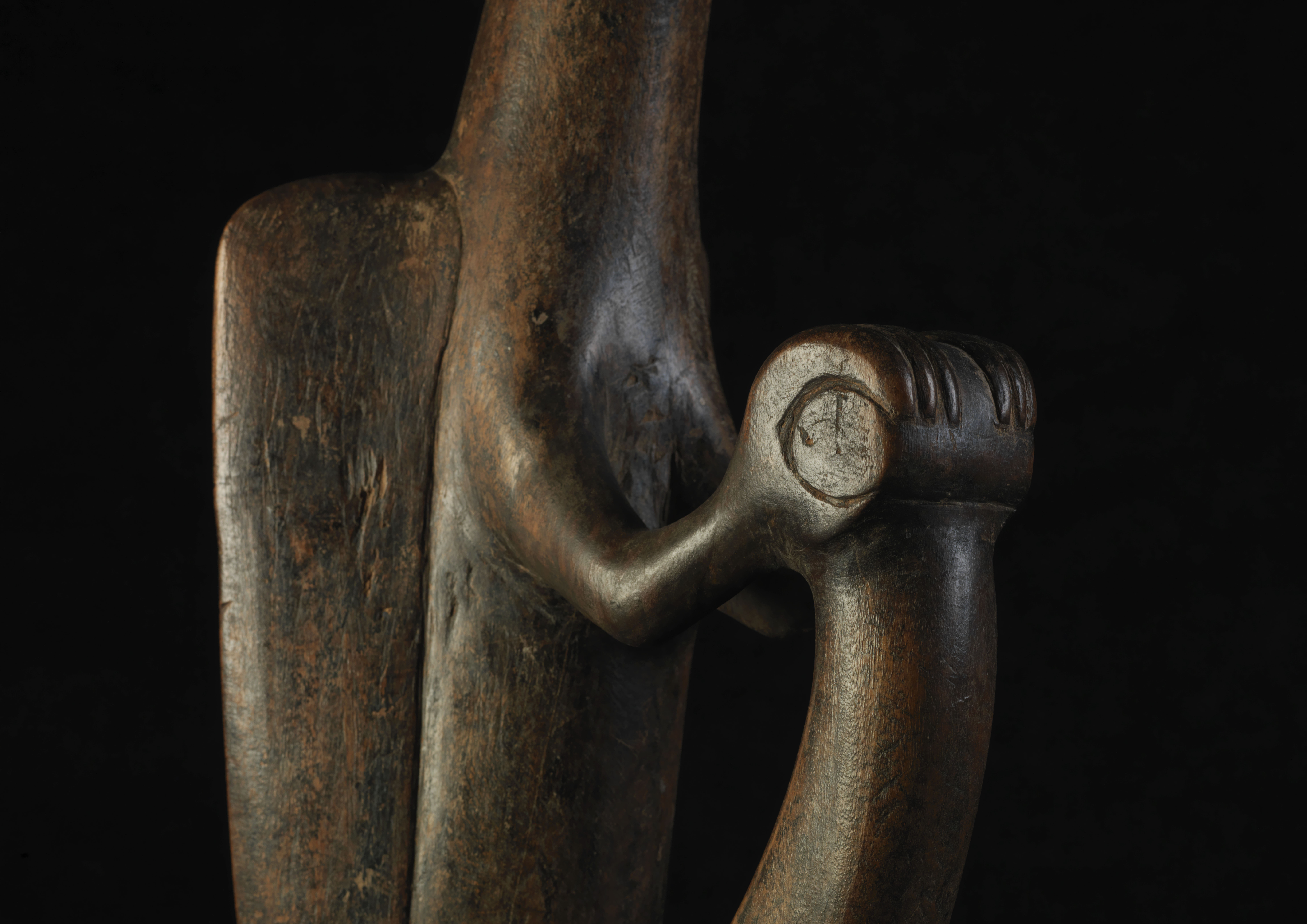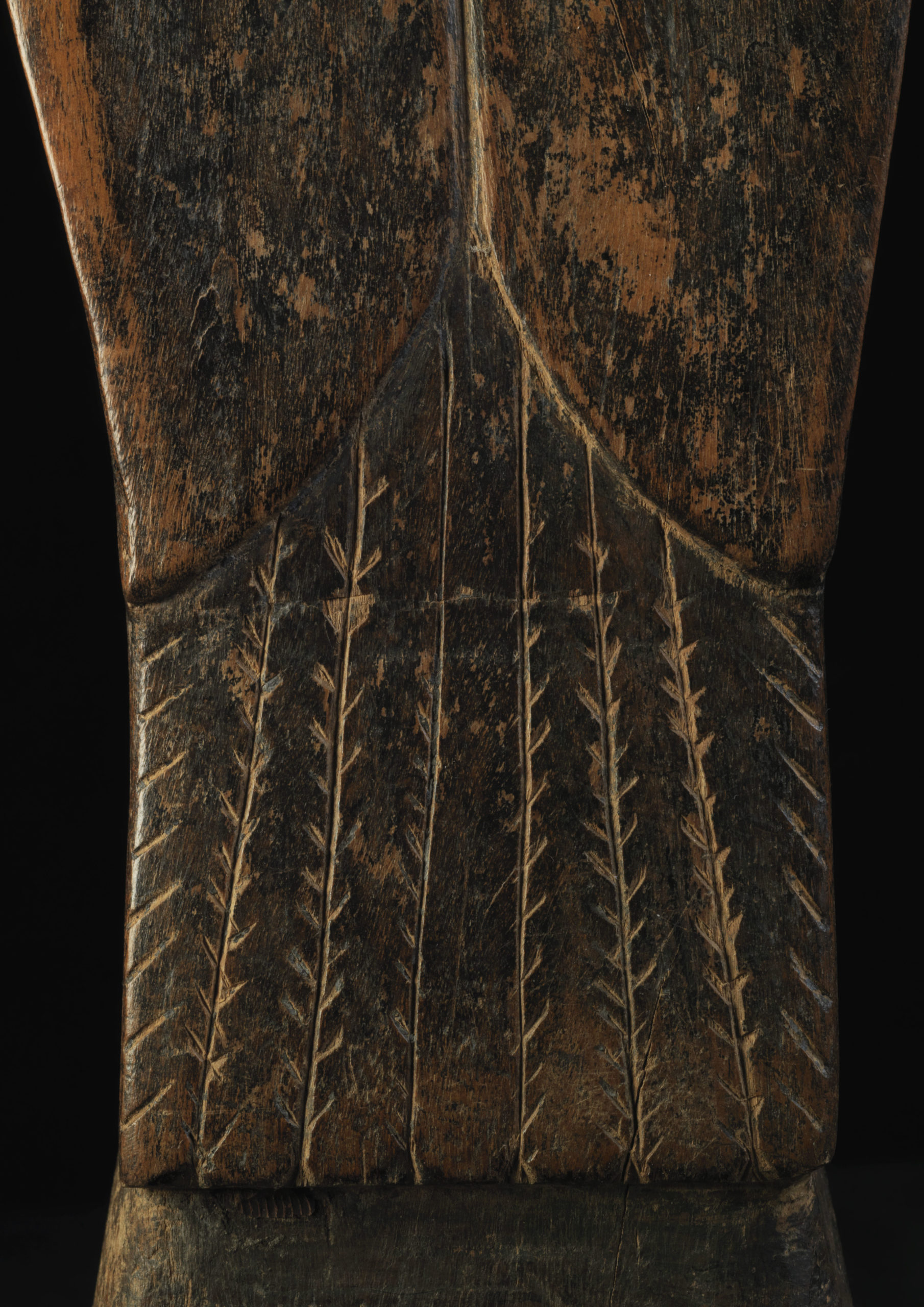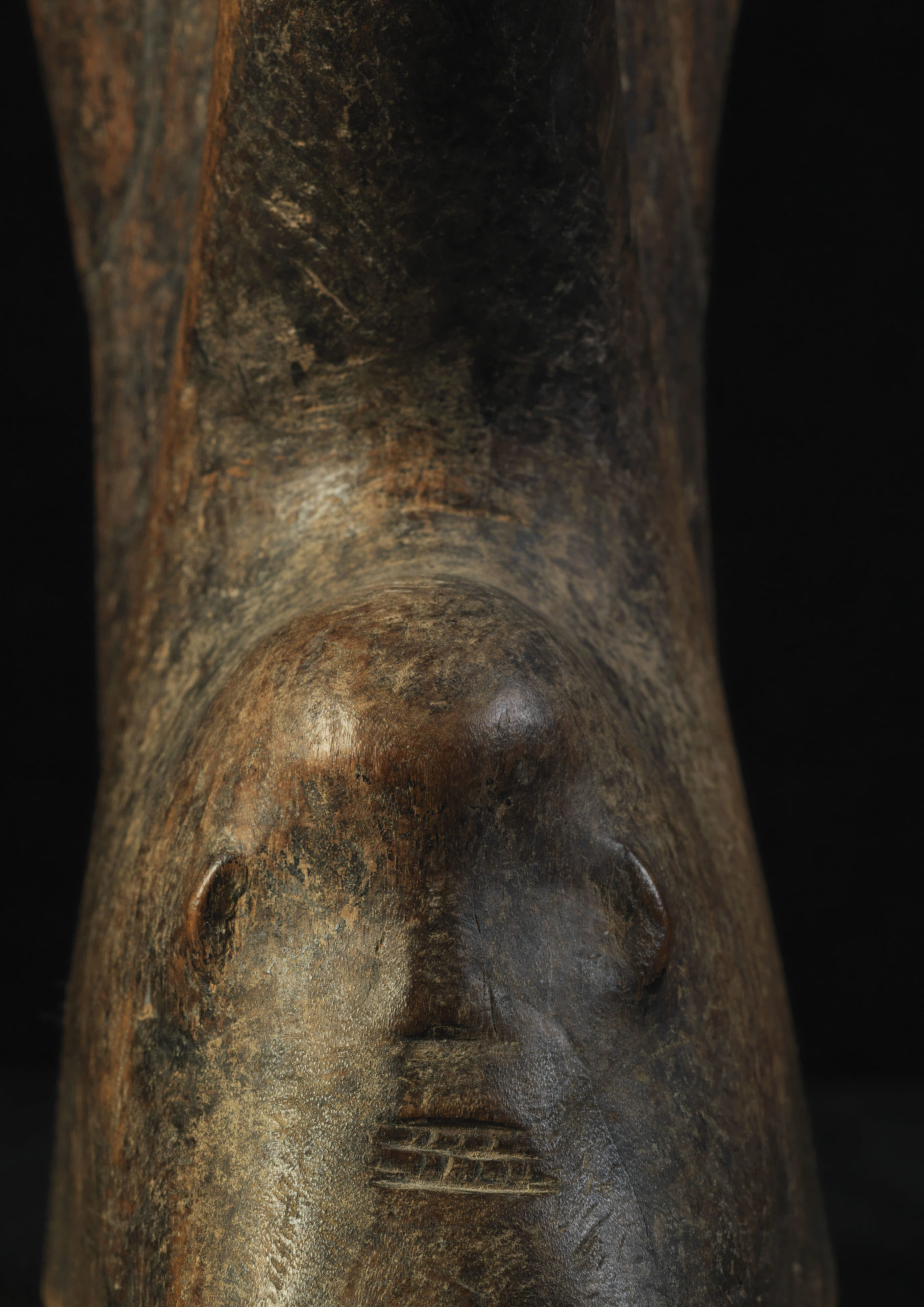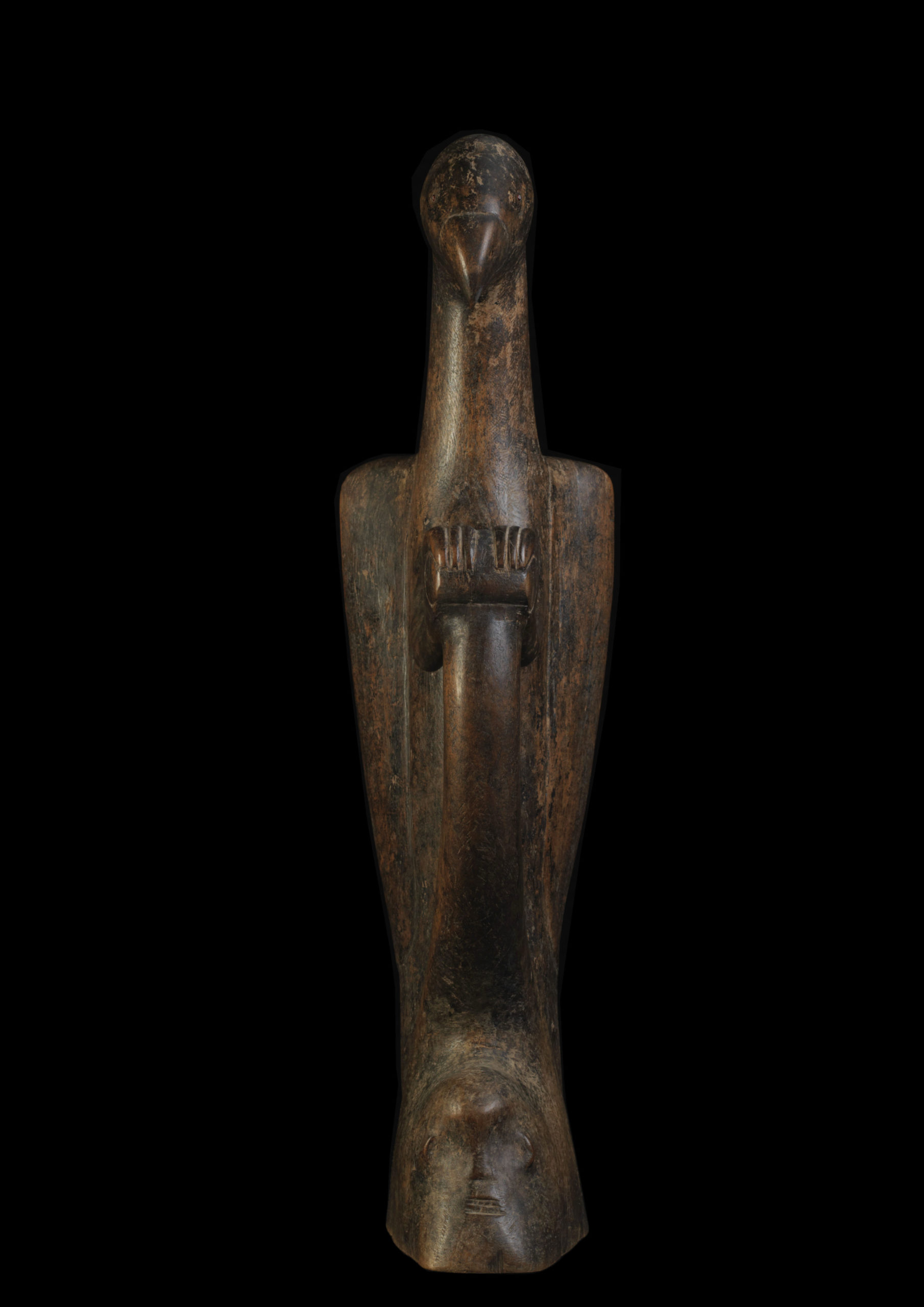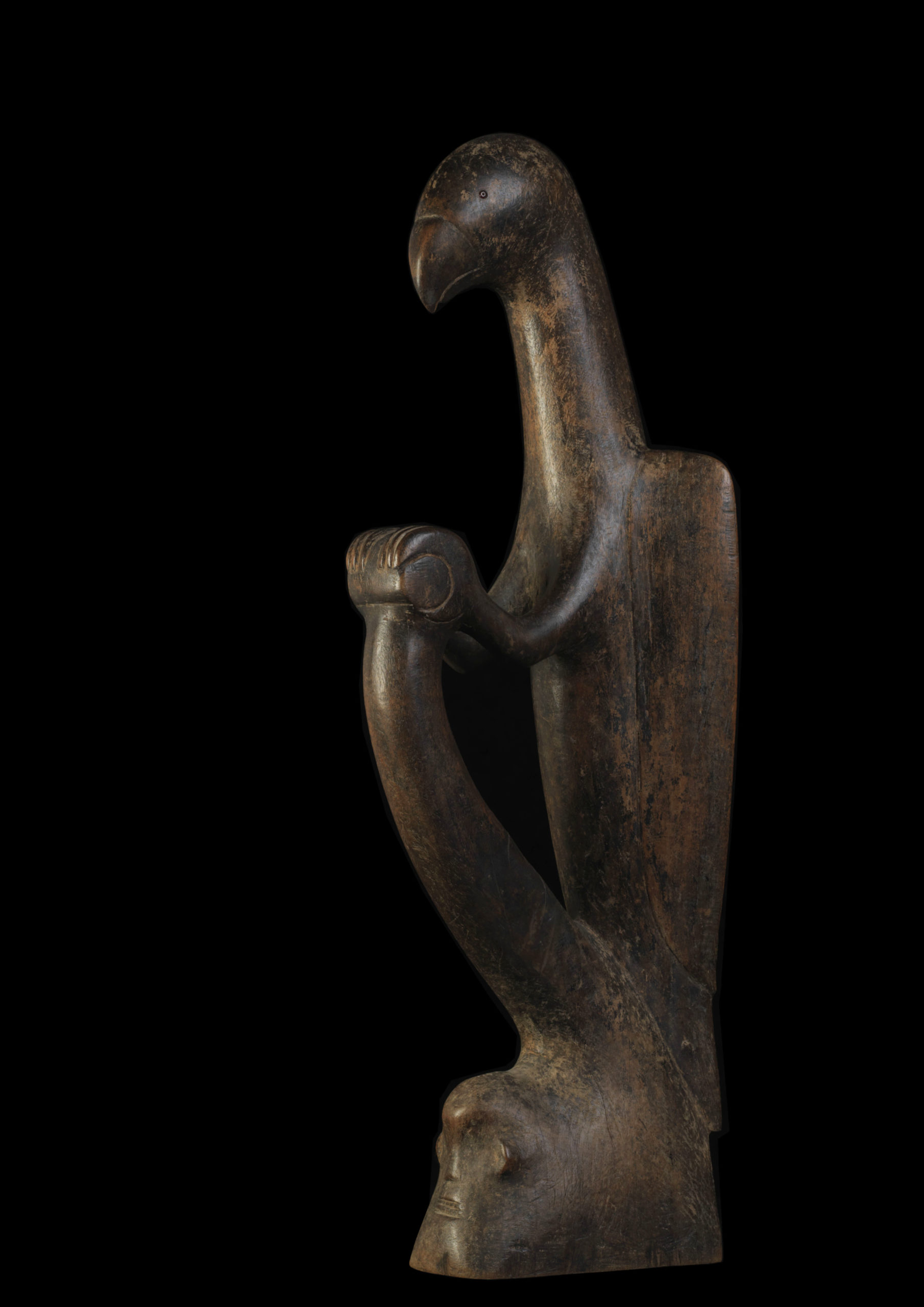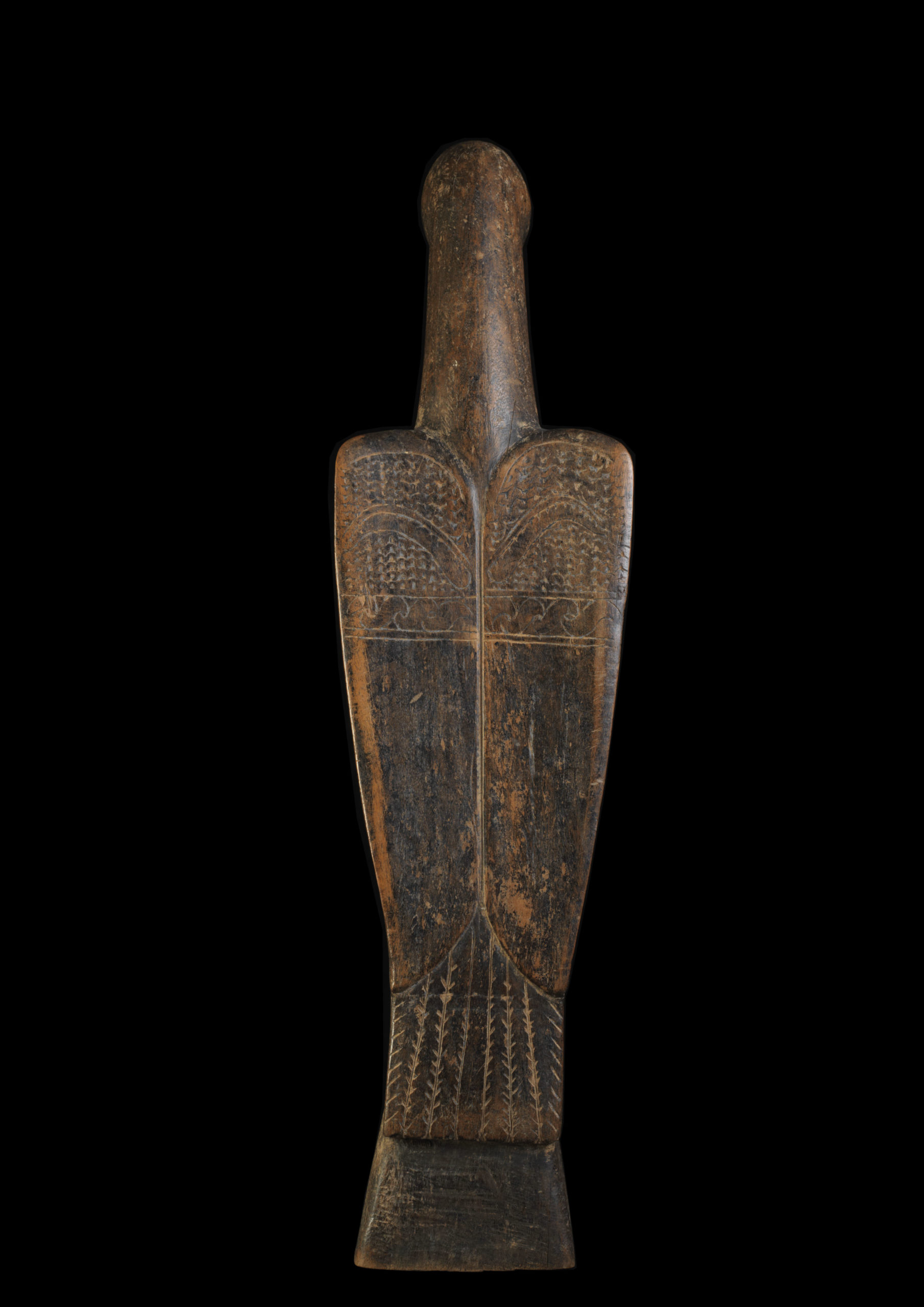Omen-Bird
The wooden sculpture is carved from one piece of wood has a smooth surface and there are partial black pigment remains. On the front side, an integrated face is visible in the base area. The bird is holding on to a branch with its claws, and on the back are incised feathers. This bird probably stood beside the stove in the living quarters of a Dayak aristocrat on Borneo.
The sculpture depicts a bird rising above a human head. In this constellation, the bird most likely has the meaning of an oracle animal, which is asked about the success or failure of the planned undertaking before going on war missions. Probably it is “Nendak” who was frequently asked during head hunting campaigns. One paid attention above all to the time of day of the bird-calls or also the place where the birds were sighted. The figure was probably positioned in front of the house altar of a nobleman or war leader (raja berani).
They are also leaders of the souls of the deceased (especially the hornbill, for the nobility). Everyday birdomes (burong bisa) can be read by any average educated dayak at first sight. They also determine agricultural and everyday activities. For personal needs meditative and ascetic techniques are also used, in which the adept or oracle seeker isolates himself in a temporary forest hut or cave (asceticism: nampok or betapa) until amulets, curses, medicine or procedures are revealed to him through visions.
There are seven omen birds, who are devoted to their master (and father, depending on the interpretation) Sengalang Burong, and who all fulfill certain oracle functions. Every Dayak knows their names. They live with their master in the longhouse Tansang Kenyalang (Hornbill House). Their names are: Ketupong (Malay Woodpecker), Beragai (a Trogon), Pangkas (Maroon Woodpecker) on the right side of Sengalang Burong’s family room in the Longhouse, Bejampong (Crested Jay), Embuas (Wave Kingfisher), Kelabu Papau (Red-tailed Trogon) and Nendak (a thrush species) on the left side. The calls are interpreted in connection with the social status of the hearing and other phenomena observed in parallel.
| Object | Omen-Bird |
| Culture | Iban-, Dusun oder Bidayuh-Dayak, Sarawak oder Sabah |
| Time | 19th century |
| Dimensions | Height 45,50 cm |
| Material | Wood, red beads, partially black pigments |




